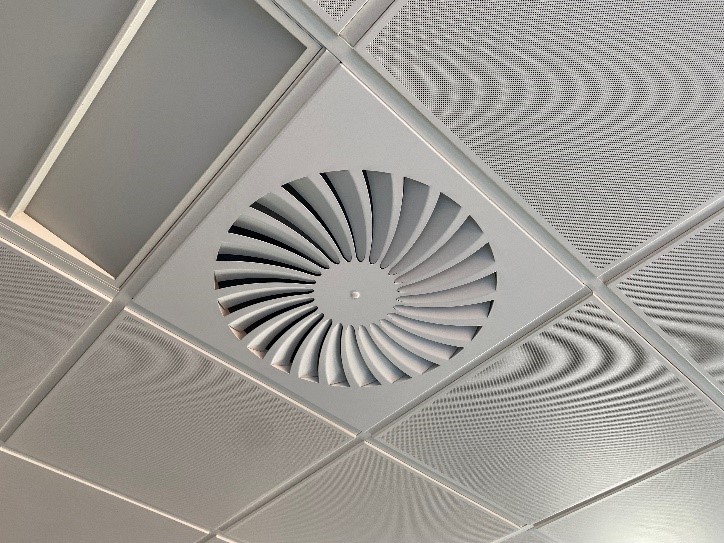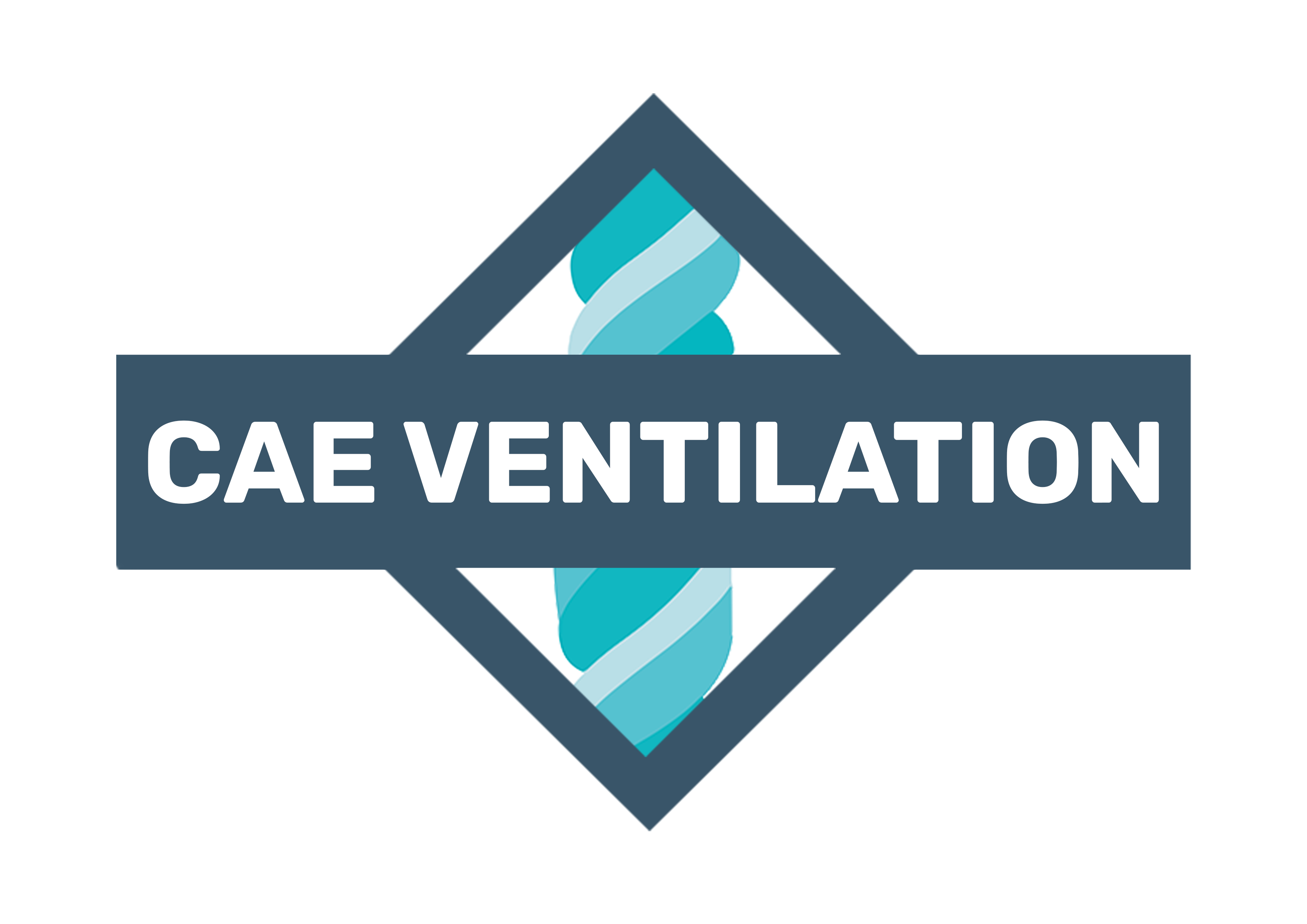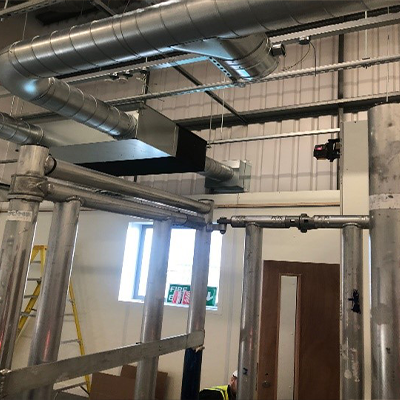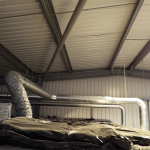The Challenge
Like many organisations, in the spring of 2021, staff started to return to the workplace of one of our clients following the end of the COVID work from home scheme. Wanting to protect their staff and make them feel comfortable with this transition, we were asked for a way to improve the ventilation in their large commercial office building.
The Solution
After conducting a site survey to evaluate the optimum system for the size and form of the facility. Plans were created on site and then returned to the CAE design centre so that a CAD drawing of the system could be drafted.
After agreeing the proposal and specifications with our client, a Mechanical Ventilation Heat Recovery system (MVHR) was selected. MVHR extracts stale air whilst also providing fresh air into the space. By law (1992 workplace health, safety and welfare regulations) any enclosed workplace must be ventilated by a sufficient quantity of fresh or purified air. In reality though even rooms with windows often don’t offer the desired level of ventilation particularly where cold weather or security concerns prevents the windows from being left open.
Unlike opening windows which relies on natural air currents, Lossnay enables reliable air change rates by using two low energy fans to move both supply and exhaust air. With internal spaces being cleaned more often with more chemicals, constant ventilation is more important than ever for the wellbeing of occupants. Understanding this, our client therefore chose to have the MVHR Ducted system installed across the whole 18000 sq ft Office facilities.
Many buildings with centralised ventilation have limited ability to increase ventilation with the existing systems. However with MVHR units such as Lossnay/VAM units, by simple adding perforations to the façade of the building additional ventilation can be achieved without effecting the building infrastructure.
Due to operations of the client, CAE could only install and commission out of hours so our experienced engineers carried out the works over several weeks of night shifts ensuring the operation of the client continued throughout the installation. This flexibility was of particular importance to our client’s operations manager who stated:
‘One area of concern throughout the project was ensuring the team could return whilst the installation was taking place. CAE’s team of engineers worked closely with us to co-ordinate the installation plans out of hours so that there was no disruption and the team turned up the next morning without recognising that any work had been carried out. The CAE team co-ordinated their resources perfectly to operate alongside ours’
Another consideration for our client was maintaining the modern appearance of the building. To achieve this we ensured that all mechanical equipment was located in the ceiling void with aesthetically positioned grille diffusers in the suspended ceiling.
The Benefits
Good ventilation within the workplace has numerous benefits for both the employee and the employer. From an employee’s perspective replacing stale air with fresh air creates a comfortable and healthy working environment, reducing the risk of airborne viruses like COVID -19 spreading. Additionally the heat recovery helps to maintain thermal comfort levels. From an employer’s perspective, surveys have shown that freshly circulated air improves employee productivity and results in a reduction of absenteeism due to sickness.

Legislation
Multiple bodies across the board such as the WHO, REHVA, BESA, CIBSE, and HSE recommend increased fresh air ventilation rates as a means to potentially reduce the spread of Covid-19.
Each have their own guidance documents, but in summary the common themes are:
- Ensure all spaces have a supply of outside air
- Change set points of any demand control sensors to maintain nominal speed even when building usage is low (e.g. 400 ppm of CO2)
- Ventilate with a reduced but continuous rate when out of hours
- Reach nominal ventilation rate at least 2 hours before building usage, and continue 2 hours after
- Constantly extract from W/C’s at a high rate, negatively pressurising if possible
Are you looking for a Ventilation System to benefit your business? Call our expert team of ductwork engineers on 0151 639 8237 to discuss your requirements.



